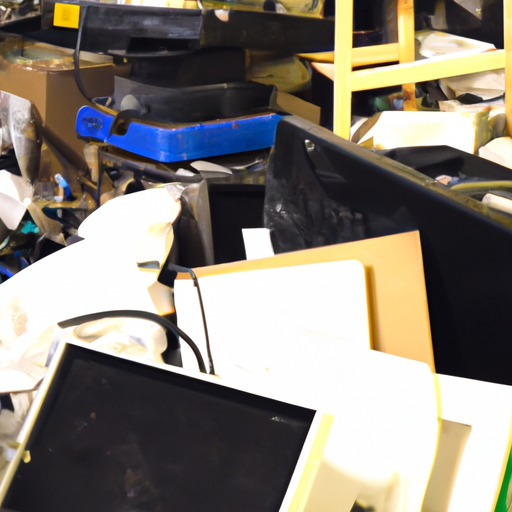“E-Waste Management: Keeping Schools Clean and Green!”
Introduction
E-waste management is an important issue for schools to consider. With the rapid advancement of technology, schools are increasingly relying on electronic devices to support their educational activities. As a result, the amount of e-waste generated by schools is growing. E-waste management is the process of properly disposing of electronic waste in an environmentally responsible manner. It involves the collection, transportation, and disposal of e-waste in a way that minimizes its impact on the environment. This article will discuss the importance of e-waste management for schools and provide tips on how to properly manage e-waste.
How Schools Can Implement Sustainable E-Waste Management Practices
E-waste management is an increasingly important issue for schools, as technology continues to become more prevalent in the classroom. To ensure that e-waste is managed in a sustainable manner, schools should implement the following practices.
First, schools should create a comprehensive e-waste management plan. This plan should include a detailed inventory of all e-waste, including computers, printers, and other electronic devices. It should also include a timeline for disposing of e-waste, as well as a plan for recycling or repurposing any items that are no longer needed.
Second, schools should ensure that all e-waste is disposed of in an environmentally responsible manner. This includes using certified e-waste recyclers and ensuring that all e-waste is properly recycled or repurposed. Schools should also consider donating any usable e-waste to local charities or organizations.
Third, schools should educate students and staff about the importance of e-waste management. This can include providing information about the environmental impacts of e-waste, as well as teaching students and staff about proper disposal methods.
Finally, schools should consider implementing an e-waste collection program. This program should include a designated area for collecting e-waste, as well as a system for tracking and disposing of e-waste.
By implementing these practices, schools can ensure that e-waste is managed in a sustainable manner. This will help to reduce the environmental impact of e-waste, while also helping to ensure that valuable resources are not wasted.
The Benefits of E-Waste Recycling for Schools

Recycling e-waste is an important part of protecting the environment and conserving natural resources. Schools, in particular, can benefit from e-waste recycling in a number of ways.
First, e-waste recycling helps schools reduce their environmental impact. Electronic waste contains hazardous materials such as lead, mercury, and cadmium, which can be released into the environment if not disposed of properly. By recycling e-waste, schools can help prevent these materials from entering the environment and causing harm.
Second, e-waste recycling can help schools save money. Many schools have limited budgets and must make difficult decisions about how to allocate their resources. By recycling e-waste, schools can save money on disposal costs and use the funds for other important projects.
Third, e-waste recycling can help schools teach students about the importance of environmental stewardship. By participating in e-waste recycling programs, schools can demonstrate to students the importance of protecting the environment and conserving natural resources. This can help students develop a sense of responsibility and appreciation for the environment.
Finally, e-waste recycling can help schools create a more sustainable future. By recycling e-waste, schools can help reduce the amount of waste that is sent to landfills and help create a more sustainable future for generations to come.
In conclusion, e-waste recycling offers a number of benefits for schools. By recycling e-waste, schools can reduce their environmental impact, save money, teach students about environmental stewardship, and create a more sustainable future.
The Impact of E-Waste on the Environment and What Schools Can Do to Help
E-waste, or electronic waste, is a growing problem in the modern world. It is defined as any discarded electrical or electronic device, such as computers, televisions, and cell phones. As technology advances, more and more of these devices become obsolete and are discarded, leading to a massive buildup of e-waste. This waste has a significant impact on the environment, and schools can play an important role in helping to reduce it.
The environmental impact of e-waste is twofold. First, many of the materials used to make electronic devices are toxic. When these devices are discarded, the toxins can leach into the soil and water, contaminating the environment. Second, e-waste takes up a great deal of space in landfills, leading to increased pressure on these already limited resources.
Fortunately, there are steps that schools can take to help reduce the amount of e-waste. One of the most effective is to encourage students and staff to recycle their old electronics. Schools can set up collection points for e-waste, and partner with local recycling centers to ensure that the materials are disposed of properly. Schools can also educate students and staff about the importance of recycling e-waste, and the potential environmental impacts of not doing so.
In addition, schools can look for ways to reduce the amount of e-waste they generate. This can include purchasing more energy-efficient devices, and extending the life of existing devices by repairing and upgrading them when possible. Schools can also look for ways to donate or resell old devices, rather than discarding them.
E-waste is a growing problem, but schools can play an important role in helping to reduce it. By encouraging recycling, educating students and staff, and reducing the amount of e-waste they generate, schools can help protect the environment and ensure a more sustainable future.
Conclusion
In conclusion, E-Waste Management is an important issue for schools to consider. It is important to ensure that all electronic waste is disposed of properly and safely. Schools should create a plan for proper disposal of e-waste, as well as educate students and staff on the importance of proper e-waste management. By taking these steps, schools can help to reduce the amount of e-waste that ends up in landfills and help to protect the environment.
